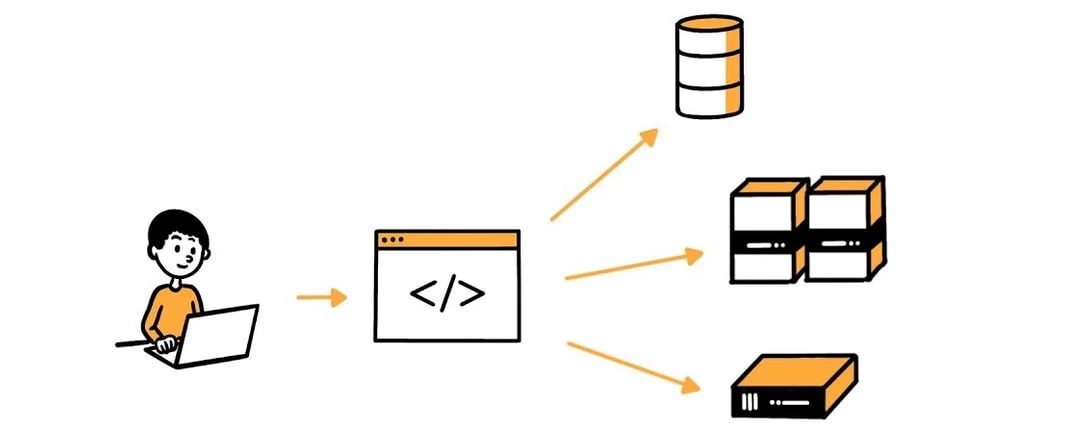Home / Blog / Importance of Unit and E2E Tests
Importance of Unit and E2E Tests

By EKbana on January 24, 2023
5m readWhen a new application/software is created to address a specific business need, we expect the application to handle a high volume of users and transactions, and to be reliable, robust, scalable, and secure. Due to the complexity of the project and the potential impact of any bugs or errors, it is necessary to incorporate testing into the development process.
Testing is considered a crucial step in the development process because it allows developers to catch and fix bugs early on, rather than later in the development cycle when they may be more difficult and expensive to address. It also helps to ensure that the application is functioning as intended and that it meets the requirements and expectations of the end users.
Testing is considered a crucial step in the development process because it allows developers to catch and fix bugs early on, rather than later in the development cycle when they may be more difficult and expensive to address. It also helps to ensure that the application is functioning as intended and that it meets the requirements and expectations of the end users.
There are several types of tests one could incorporate while developing software such as Unit Tests, Integration Tests, E2E Tests, Functional Tests, Performance Tests, Security Tests, and so on. Today we shall be discussing Unit and End-to-End(E2E) Tests.
Unit Testing
Unit testing is a crucial aspect of software development that involves testing individual units of source code in order to validate that each unit is working as intended. It is a vital component of the software development process for several reasons:
- Unit testing helps to ensure that changes made to the code do not break existing functionality. This is crucial in large and complex codebases where small changes can have unintended consequences. By testing each unit of code separately, developers can catch any issues before they make it into production, saving both time and resources.
- Unit testing can also help to identify and fix bugs early in the development process. By catching bugs early, developers can address them before they become more significant problems. This can save time and resources in the long run, as it is often easier and cheaper to fix bugs early on rather than later.
- Unit testing also helps to improve the overall quality of the codebase. By ensuring that each unit of code is working as intended, developers can create more reliable and robust software. This can lead to fewer bugs, better performance, and a better user experience.
- Unit testing helps to make the code more maintainable by providing confidence in making changes to the existing codebase
- Unit testing also helps in identifying the areas of the codebase that may be prone to errors, which can help developers to focus their testing efforts on those areas.
One popular framework for unit testing in JavaScript is Jest. Jest is a JavaScript testing framework that is easy to set up and use, and it has a variety of features that make it well-suited for unit testing.
Here are a few examples of how to use Jest for unit testing:
Testing a simple function:


Testing an asynchronous function:


In conclusion, unit testing is a vital component of the software development process. It helps to ensure that changes made to the code do not break existing functionality, identify and fix bugs early, and improve the overall quality of the codebase. By incorporating unit testing into their development process, developers can create more reliable, robust, and high-quality software.
But what if a function is dependent on another function, and we need to test all the dependent functions? That’s where E2E testing comes into play.
E2E Testing
End-to-end (E2E) testing is a method of testing that ensures that an application functions correctly from start to finish, simulating the real-world usage of the application. This type of testing is crucial for ensuring that the application behaves as expected for the end user and that all the different components of the application work together seamlessly. The advantages of using the E2E test are
- E2E testing allows you to catch bugs and issues that unit testing may not cover.
- It ensures that the different components of the application work together seamlessly, simulating the real-world usage of the application.
- It helps in providing a good user experience, as it tests the application's behavior in real-world scenarios.
- It helps to identify the integration issues between different parts of the system.
- E2E tests provide a way to automate the testing of the application's entire workflow, making it faster and more efficient to test the application.
Here are a few examples of how to use Jest for e2e testing:
Testing a simple function:

Testing an asynchronous function:


Things to be considered regarding the second example:
- Both baseFunction and otherFunction are asynchronous, which means that they return promises. To test them, we need to use the await keyword before calling the functions, and also the test case itself needs to be asynchronous by adding the async keyword before the function.
- The baseFunction is dependent on the otherFunction, which is responsible for fetching the order data from the database using the orderId provided by the baseFunction.
- We're assuming that the database.fetchUserData, and database.fetchOrderData have been already tested with unit tests and we are sure they are working as expected.
- Also, it's essential to have a mocked version of the database to perform the test. In this way, we don't need to have a real database connection to perform the tests and also it helps to isolate the test case and make it faster.
In conclusion, E2E testing is an important method of testing that ensures that an application functions correctly from start to finish, simulating the real-world usage of the application. It's important to keep in mind that E2E testing is just one piece of the puzzle, and it's crucial to have good test coverage across all levels of testing. E2E tests should be used in conjunction with unit tests, integration tests, and other types of testing to ensure the quality of the application.
We’re empowering
business growth for our clients.
Take the first step towards growth today.
Get Proposal
More From EKbana
 See All Blog
See All Blog




